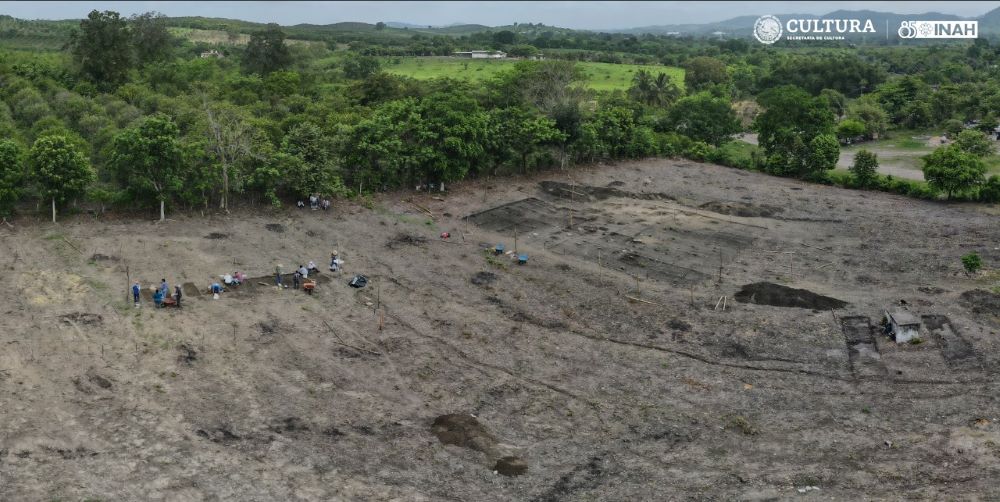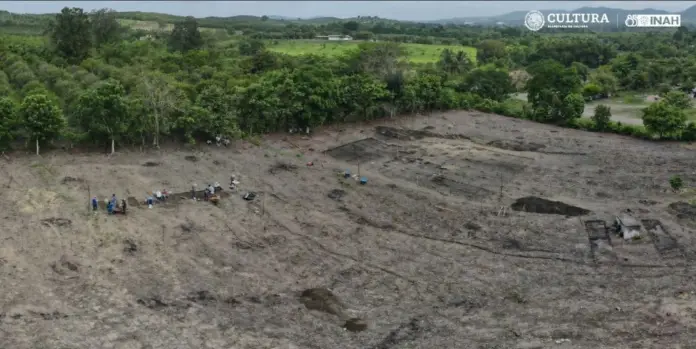
The remains of a house built with monolithic stone were found in the Morgadal ejido, the result of archaeological rescue work linked to the construction of the state headquarters of the Universidad para el Bienestar “Benito Juárez García” (UBBJ), which were coordinated by the researcher of the INAH Veracruz Center, Patricia Castillo Peña.
The discovery was recorded on July 10, 2024, when excavations began on the property, the information obtained from which is part of a regional study, which aims to implement a database on the settlement pattern in the El Tajín cultural region, mainly in north-central Veracruz.
The archaeologist said that the 3.4 hectare property was donated by the community, and was divided into seven excavation fronts; In the so-called Unit I, a platform was found with remains of monolithic stone walls, whose layout and material indicate that it was a house-dwelling, probably belonging to an elite family.
It is estimated that the age of the context is located between the end of the Epiclassic period and the beginning of the Mesoamerican Postclassic (850 – 1200 AD).
“Monolithic stone is a material found in the region and was used to create architecture with a prevention technology, because floods were recorded caused by medieval climate change,” she said.
Likewise, objects of golden green obsidian were found, which comes from the Sierra de las Navajas, in Hidalgo, “it seems to be a production of family activity, because only two cores and tools were recorded, such as knives and arrowheads, this variety is more resistant than the dark one, that is why it was appreciated in antiquity,” explained the researcher.
Various residential areas have been found around the remains of the construction, peripheral to the El Tajín Archaeological Zone, and through “the use of the drone and 3D scanner technology we have obtained a comprehensive view of the area,” Castillo Peña added, referring to the fact that the monolithic stones of the residential unit, some of which reached one meter in length, will be completely covered for conservation, due to environmental conditions.
The field work, he said, concluded on August 10, 2024, and now the process of analyzing the archaeological material recovered in the excavation begins, among which stands out a fragment of a flute of Huastec influence, with the figure of a character with a nose ring, which probably measured between 10 and 15 centimeters.
The participation of 20 UBBJ students in the archaeological rescue, he added, had the objective of “promoting the appropriation of the heritage so that later they become its protectors.”
The academic coordinator of the degree in Historical, Cultural and Natural Heritage at the UBBJ, Papantla campus, Jesús Trejo González, stressed that the educational institution is interested in showing the town and the student community the joint responsibility of preserving the entity’s heritage.
Students from the sixth and eighth cycles, he added, joined the excavation and laboratory teams, and were trained to use tools used in archaeology, so that they could work with the experts.
The activities of the students, he pointed out, included the recording of what was observed during the development of the archaeological rescue, as well as a photographic record of the entire process of the project, interviews with community authorities, archaeologists, in order to preserve this testimony for the memory of the university.
In this way, “they obtained a valuable experience for their academic and professional training,” Trejo González concluded by commenting that, at the end of the analyses, it is expected that some of the archaeological materials can remain under the protection of the university, for dissemination purposes.
Source: inah






